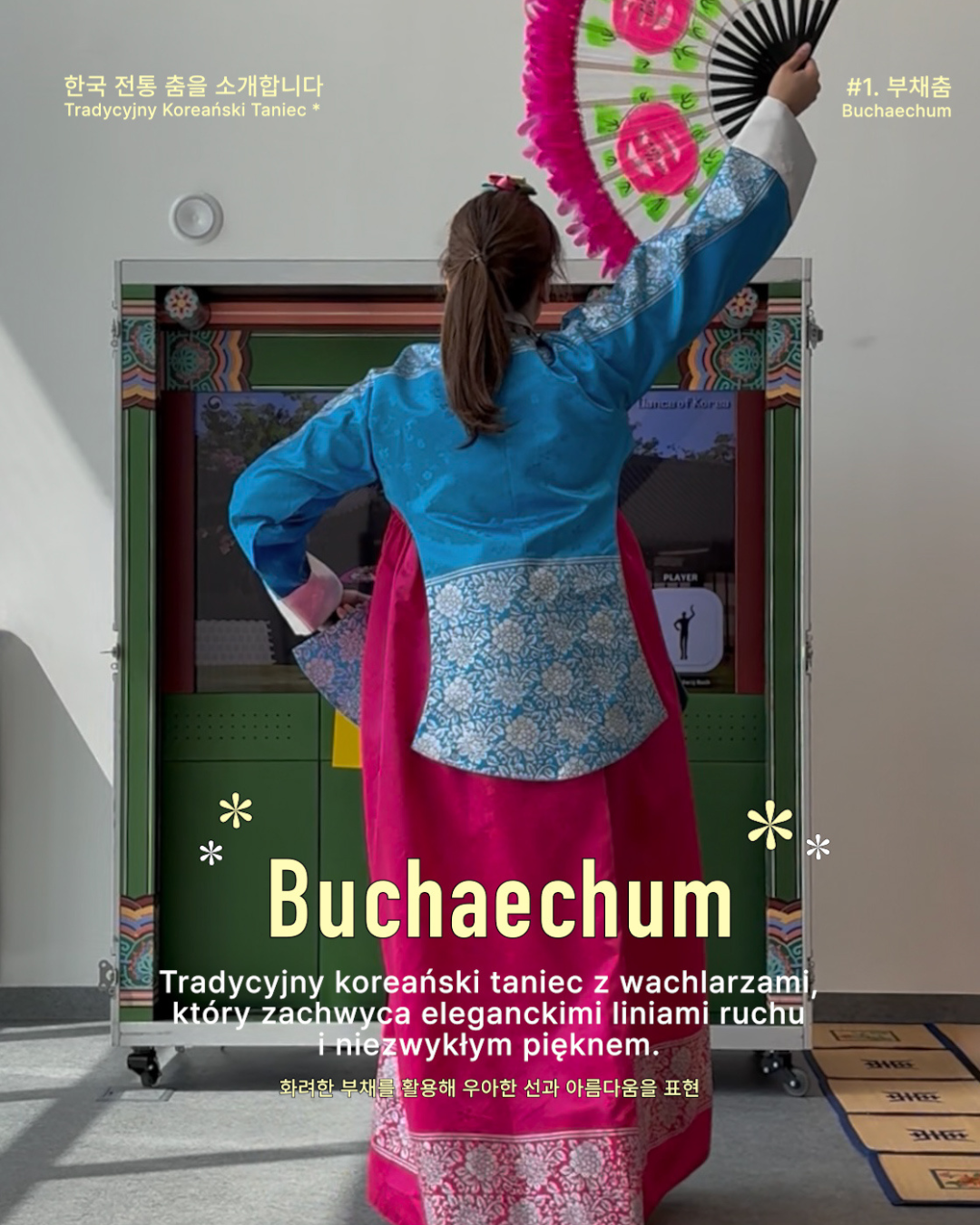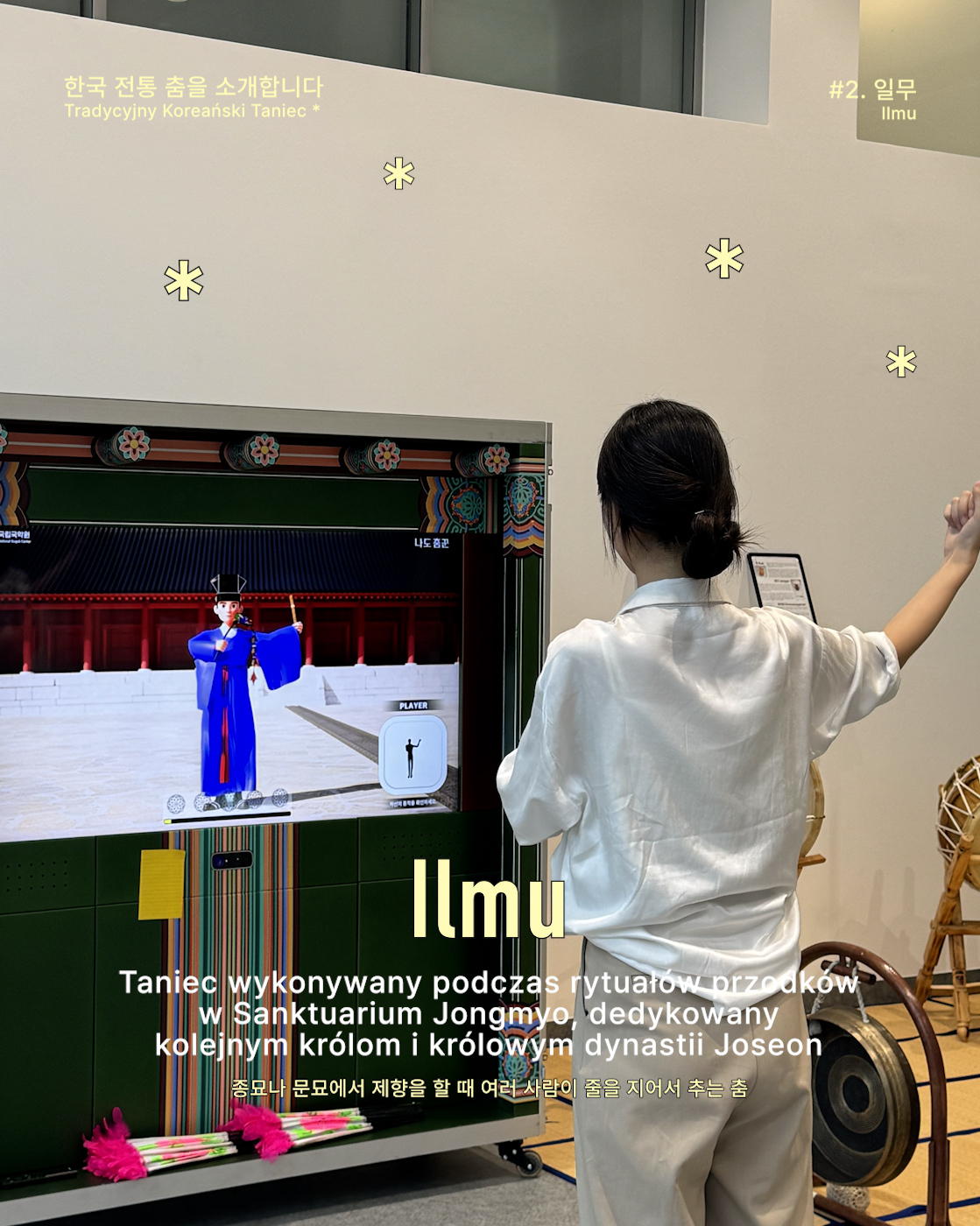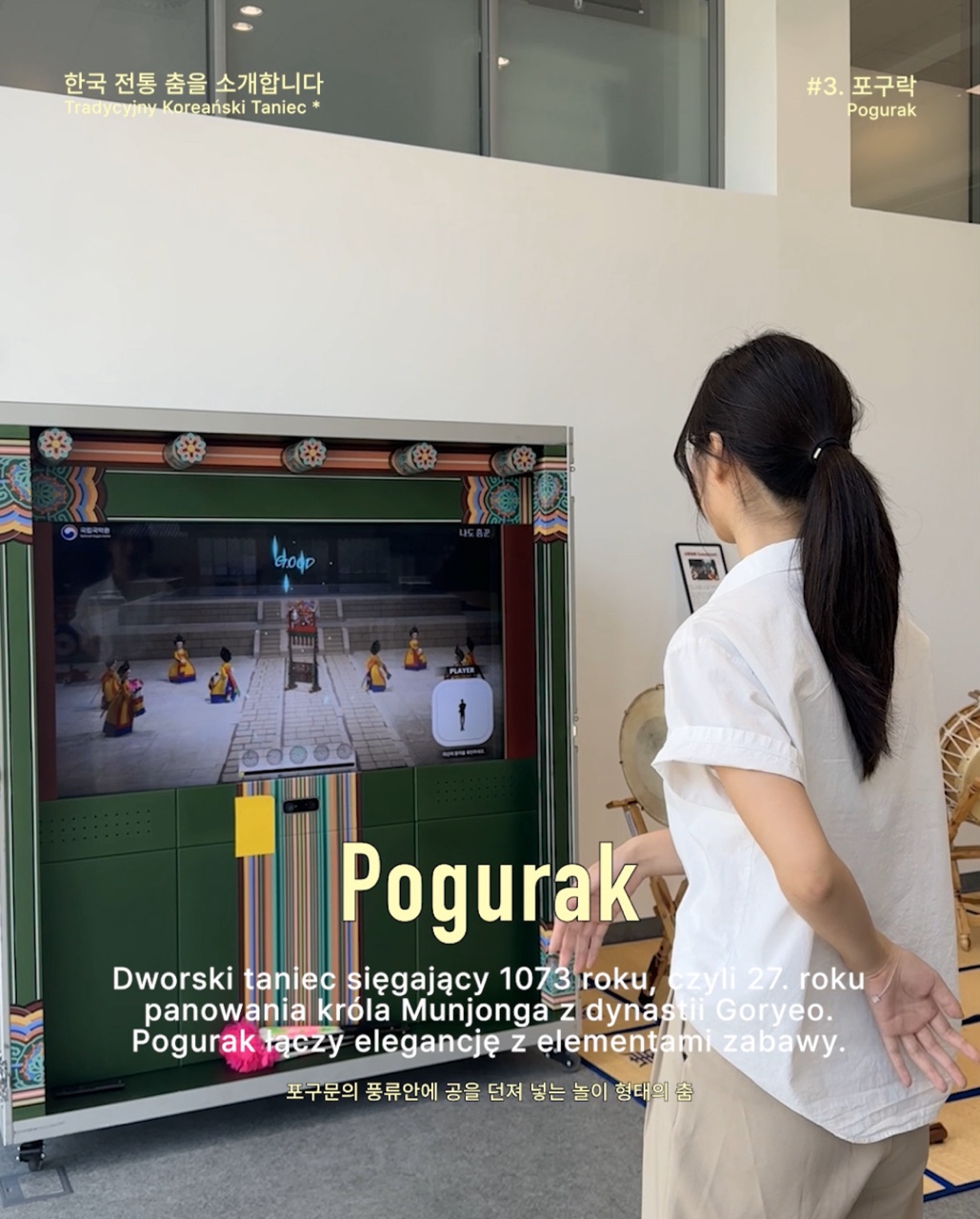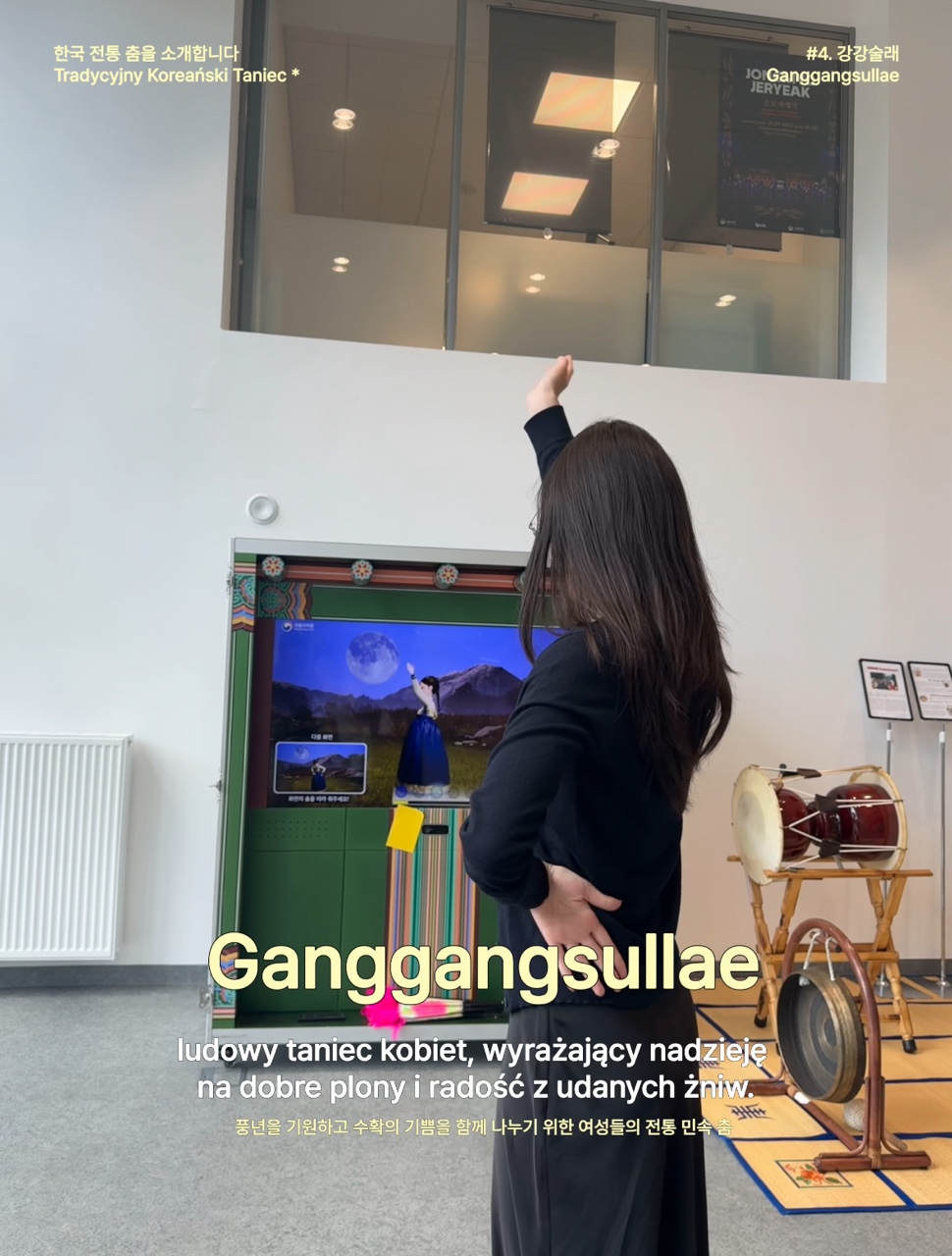The Korean Cultural Center in Poland will hold a permanent exhibition on traditional dances until August 18, 2025. Visitors can experience Buchaechum, Ilmu, Ganggangsullae, and Pogurak.

The Buchaechum is a traditional Korean dance that uses beautifully decorated fans to express elegant lines and graceful movements.

Ilmu is a ceremonial dance performed during ancestral rites at Jongmyo Shrine, where the spirit tablets of the kings and queens of the Joseon Dynasty are enshrined.
Accompanied by solemn music, the dance features refined, deliberate movements that carry a deep and reverent meaning—honoring the ancestors with dignity and respect.

Pogurak is a court dance that has been passed down since the 27th year of King Munjong’s reign during the Goryeo Dynasty (1073).
This traditional dance incorporates a playful game in which small, ball-shaped objects are thrown through a net, blending elegance with joy in a graceful performance.

Ganggangsullae is a traditional Korean folk dance performed by women to pray for a good harvest and to celebrate its blessings together.
It is commonly danced during national holidays and community events—such as Lunar New Year, the First Full Moon Festival (Jeongwol Daeboreum), Dano, and Chuseok—where participants sing and dance in unison, embodying harmony and togetherness.
In 2009, Ganggangsullae was inscribed on UNESCO’s Representative List of the Intangible Cultural Heritage of Humanity.